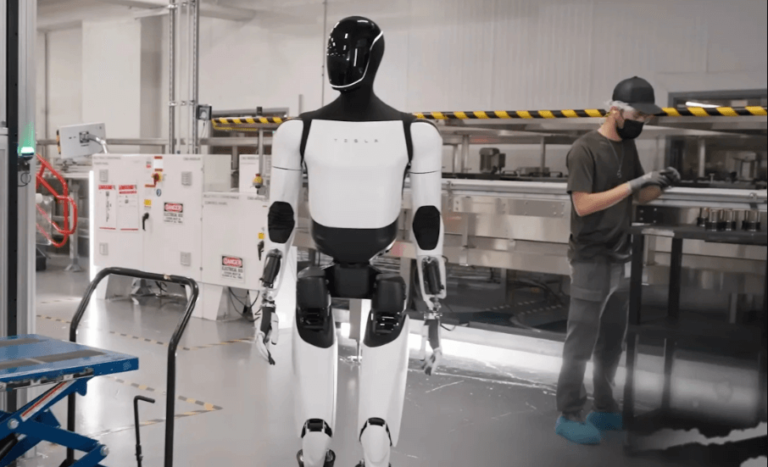AI Testing Tools Every QA Engineer Should Know in 2025

Now that the software development cycle is shorter and more agile, there is a greater priority on intelligent test solutions than before. We are seeing quick bursts of test automation for a specific release, and then forgotten, which won’t be successful or sustainable for organizations when it comes to speed, scalability, and accuracy.
Enter AI testing tools, a new generation of platforms built to empower QA engineers with smarter automation, faster debugging, and predictive insights.
In 2025, AI testing tools will no longer be just a “nice-to-have” but a core component of every modern QA strategy. From accelerating regression suites to autonomously healing test scripts, these tools are redefining the boundaries of what’s possible in quality assurance.
In this blog, we’ll explore what AI testing tools are, dive into the top platforms leading the charge, and wrap up with actionable best practices for getting the most out of these technologies.
What Are AI Testing Tools?
AI testing tools use artificial intelligence and machine learning algorithms to facilitate different stages of software testing. Traditional tools must follow rigid test scripts or rely on human observation, while AI-based platforms can learn from user behavior, detect anomalies, deal with UI changes, and automatically produce intelligent test cases.
Hence, whether validating UI functionality, performing regression tests, or ensuring cross-browser compatibility, AI testing tools free human labor while keeping time constraints low.
See also: Safari for Windows Testing: Solutions for Seamless Cross-Browser QA
Why QA Engineers Need AI in 2025
QA engineers today face a tough challenge: test faster and better, without burning out. AI can really help make that possible. Here’s why:
Cut down on test maintenance.
When apps change, automated tests often break. AI tools for developers can fix these tests on their own, saving QA engineers from constantly rewriting scripts.
Cover more ground
Manually writing every test case is impossible. AI can explore apps automatically and find hidden bugs or unusual user paths that testers might miss.
Spot flaky tests quickly.
Some tests fail randomly and cause confusion. AI can identify these flaky tests fast so teams can fix or remove them, making test results more reliable.
Predict problem areas
Instead of waiting for bugs to pop up, AI can predict risky parts of the code based on past data, helping QA focus where it matters most.
Bring teams closer
AI-powered dashboards give everyone, from developers to ops, a clear picture of quality status, helping teams work better together.
In short, AI helps QA engineers work smarter, not harder. It eliminates much of the dull work, provides more in-depth insights, and catches bugs earlier. If you want to continue maintaining a fast release and high development standards, AI is no longer a nice-to-have but a need-to-have.
Best AI Testing Tools for QA Engineers in 2025
Here are the top tools you should consider adding to your QA toolkit this year.
KaneAI
KaneAI is a GenAI-native test assistant by LambdaTest that automates software testing using natural language. It helps you generate, debug, and evolve tests for web, mobile without writing complex code.
You can export tests in Selenium, Playwright, or Appium, and run them at scale using HyperExecute. With features like auto-healing and root cause analysis, KaneAI simplifies end-to-end testing workflows.
Key Features:
- Natural-Language Test Generation & Planning
Just describe your test scenario in plain English, and KaneAI will generate and evolve test steps automatically. - Multi-Language Code Export
Export generated tests in popular frameworks like Selenium, Playwright, Appium, etc.. - Two-Way Editing & Versioning
Edit tests in natural language or code; changes sync bidirectionally, with built-in version history. - AI Debugging & Auto-Healing
Tests detect failures, self-heal flaky steps, offer insights, and support root‑cause analysis, all with AI assistance.
Testim by Tricentis
Testim leverages AI to streamline the creation and maintenance of automated tests. Its smart locators and self-healing capabilities ensure that tests remain stable even as applications evolve.
Key features:
- AI-powered test creation with minimal coding.
- Self-healing tests that adjust to UI changes.
- Parallel test execution for faster results.
- Integration with popular CI/CD tools.
- Detailed analytics for test performance monitoring.
ACCELQ
ACCELQ offers a codeless test automation platform that utilizes AI to facilitate end-to-end testing across web, mobile, and API layers. Its adaptive test automation approach ensures rapid test development and maintenance.
Key features:
- Codeless test creation with natural language processing.
- AI-driven test case generation and optimization.
- Continuous testing with real-time feedback.
- Integration with DevOps tools for streamlined workflows.
- Comprehensive reporting and analytics dashboards.
Functionize
Functionize combines AI and machine learning to automate functional testing. Its platform supports the creation of tests in plain English, making it accessible to both technical and non-technical users.
Key features:
- Natural language test creation.
- Self-healing tests that adapt to changes.
- Cloud-based test execution for scalability.
- Visual testing capabilities for UI validation.
- Integration with CI/CD pipelines.
Virtuoso
Virtuoso offers an autonomous testing platform that uses AI to create and maintain tests. Its natural language processing capabilities allow for the generation of test cases from plain English descriptions.
Key features:
- AI-driven test creation and maintenance.
- Natural language processing for test case generation.
- Self-healing tests that adapt to application changes.
- Integration with various development tools.
- Real-time analytics and reporting.
AutonomIQ
AutonomIQ provides an AI-powered platform for autonomous testing. It focuses on reducing manual effort by automating test case generation and maintenance.
Key features:
- AI-driven test case generation.
- Self-healing tests that adapt to changes.
- Integration with DevOps pipelines.
- Real-time analytics and reporting.
- Support for web and mobile applications.
UIlicious
UIlicious offers a user-friendly platform for automated UI testing. Its AI capabilities ensure that tests are resilient to changes in the application’s UI.
Key features:
- Simple syntax for test creation.
- AI-powered test maintenance.
- Cross-browser testing support.
- Scheduled test runs and reporting.
- Integration with CI/CD tools.
ReTest
ReTest focuses on regression testing by leveraging AI to detect changes and generate tests accordingly. Its approach minimizes the need for manual test maintenance.
Key features:
- AI-driven regression testing.
- Automatic test generation based on application changes.
- Integration with existing test frameworks.
- Support for various application types.
- Detailed test reports and analytics.
Playwright with AI Extensions
Playwright is an open-source automation library for browser testing. When combined with AI extensions, it offers enhanced capabilities for test creation and maintenance.
Key features:
- Support for multiple browsers and platforms.
- AI-powered test generation and maintenance.
- Integration with CI/CD pipelines.
- Support for modern web application testing.
- Extensive community support and documentation.
Parasoft SOAtest
Parasoft SOAtest uses AI and machine learning to enable intelligent test creation and maintenance for API testing. It supports comprehensive testing for REST and SOAP APIs, ensuring quality across complex integrated systems.
Key features:
- AI-driven test case generation from traffic or WSDL definitions
- Smart assertion generation and automatic test maintenance
- Integration with CI/CD workflows and reporting systems
- Risk-based test optimization and test impact analysis
- Supports regression, security, and load testing for APIs
Appsurify TestBrain
Appsurify TestBrain uses AI to optimize test selection during the software testing phase. It intelligently chooses the most relevant test cases to run based on code changes, drastically reducing test cycle times.
Key features:
- Predictive test selection based on code commits
- Flaky test detection and isolation using historical data
- Integrates with popular CI/CD platforms and test frameworks
- Real-time feedback to prevent regressions before deployment
- Reduces execution of unnecessary tests, saving resources
MuukTest
MuukTest brings automation to manual testing by auto-generating test cases through AI. It offers simple test creation without the need for coding, allowing QA teams to scale their testing capabilities quickly.
Key features:
- AI-generated tests based on user flows and input patterns
- Zero-code platform for manual testers and QA engineers
- Self-maintaining tests that adapt to application updates
- Works seamlessly with CI/CD tools and testing frameworks
- Real-time analytics for issue triaging and trend detection
Best Practices for Implementing AI Testing Tools
Adopting AI testing tools requires a strategic approach to maximize their benefits. Below are some best practices to consider:
Start with a Pilot Project
Begin by implementing the AI testing tool on a small-scale project. This approach allows your team to understand the tool’s capabilities and limitations without significant risk. Gather feedback and assess the impact on testing efficiency and accuracy before scaling up.
Invest in Training
Make sure your QA team is sufficiently trained to use the AI testing tools effectively. If they can learn to take advantage of all of the features and functionality, they will be able to get the most out of testing.
Integrate with Existing Workflows
Look for AI testing tools that can plug into your current development and testing workflows. This will help you eliminate some of the work knowing that testing can help seamlessly integrate into the development process.
Monitor and Evaluate Performance
Keep monitoring the performance of the AI tools. You can track test coverage, defect detection, and maintenance effort in order to decide if the tool is a fit for your needs and whether you should continue using it.
Conclusion
AI testing tools are no longer a future idea, but are one of the mission-critical resources every QA engineer can use in 2025. From intelligent test generation to self-healing scripts and predictive insight, these as-a-service platforms are aiming to limit human interactions while ensuring consistent and scalable testing.
The right set of tools, like KaneAI by LambdaTest, Testim, and others, will help you smooth the testing pipeline, find bugs quicker, and deliver quality applications. An AI testing tool paired with certain best practices, like keeping governance, training the AI model, and performance monitoring, can become a selling point in your QA strategy.
As testing gets complex with multi-platform apps, microservices, and real-time updates, AI test automation equips the QA teams with just the edge they need to catch up and get ahead.






